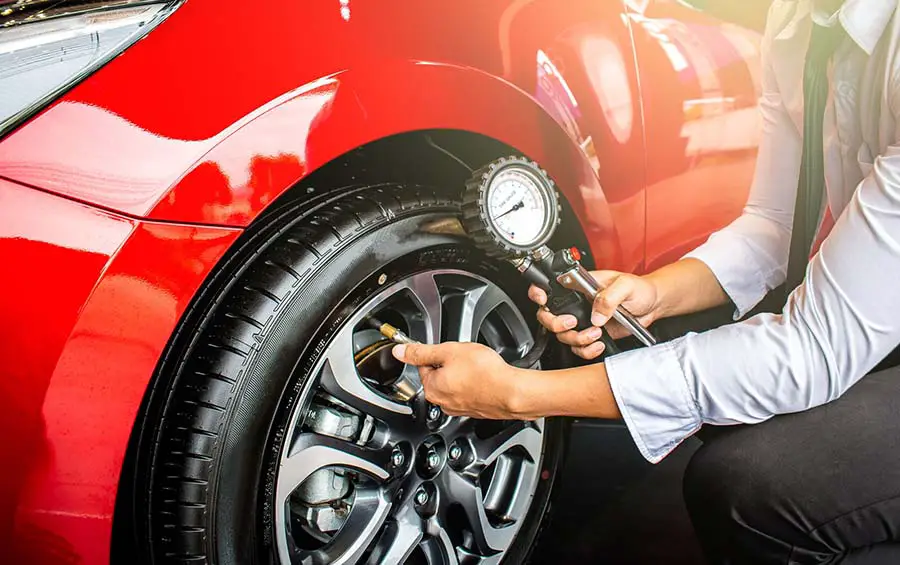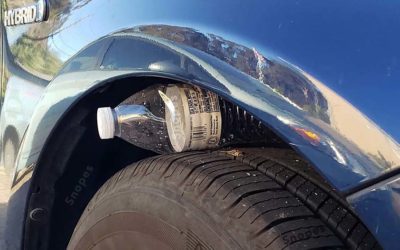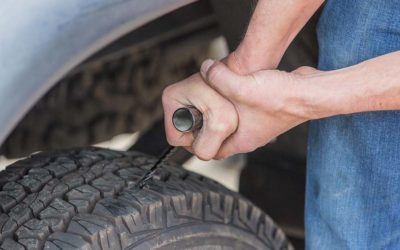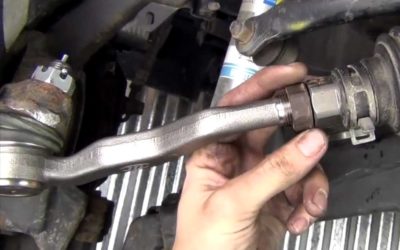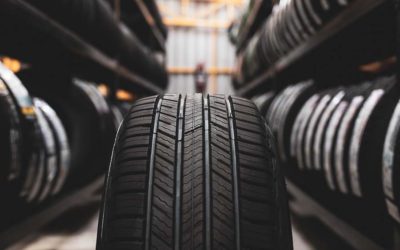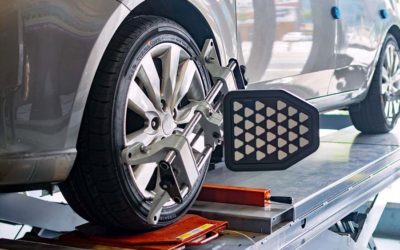If you want an answer to this question, you’d better understand the foundation of this information. What is PSI? It’s the abbreviation for “pound per square inch” used to measure tire pressure.
Using this metric, you can determine if your car is underinflated, overinflated, or in the best condition. People often take their four-wheeled friend to the mechanic monthly to have a professional check the pressure. Otherwise, you can do it at home with a regular or digital gauge.
Is 40 PSI Good Tire Pressure?
YES.
For most sports and passenger vehicles, 40 PSI tire pressure is a decent measurement. What about other vehicles? You will have to check for their specifications. You’re good to go if the number tells you that 40 is within the range.
Each car type has different requirements for this facet. The mentioned number might be too low or high for some specific variants. For instance, if your vehicle is small and requires a 35 PSI, 40 is too high for it.
Some variants can work well within the range of 25 to 32, or even up to 51. Remember that the given number is only for cold tires. The situation might change after a long trip that has heated them.
That also means you should check the measurement again if you’ve just got home from a long trip to see if the number is still relevant.
In addition, different brands might use different kinds for their products, which may lead to different requirements due to the tire’s characteristics. To find the best PSI figure for your comfortable ride, you should check its specifications and follow suit.
See more: What Tire Pressure Is Too Low
Why Does Pressure Change?
Besides wear and tear, the pressure might change for various reasons. Two of the most common reasons are climate and weather.
Talking about wear and tear, yes, time and usage will depreciate goods. In this case, it will take about one to two PSI from your tire. That’s why you should take it out regularly for a checkup, depending on how often you use it.
What about the climate and weather factors? Is 40 psi too high for tires or too low when the weather changes? An increase in temperature caused by hot weather can expand them, and a decrease in temperature can also force them to shrink. Both cases affect the air inside of them.
Aside from the factors mentioned above, only unexpected events which bring damage to your tires can cause a change. So, whenever you feel like something is off about them, repair them immediately to avoid any potential risks.
What’s The Ideal Tire Pressure For My Car?
You can find this specification in the car manual. The vehicle manufacturer has carried out several calculations and tests to bring out that number. Usually, the number is written down on a card/sticker and put inside the door on the driver’s side.
The recommended PSI should generally be within the range of 32 to 40 in cold conditions.
How Does Tire Pressure Affect Driving?
Overinflated and underinflated situations can both severely affect your driving experience. Accidents often occur under these circumstances. NHTSA has recorded a 300% increase in accident probability while driving with low-pressure tires.
Let’s dive deeper and understand how they can be dangerous.
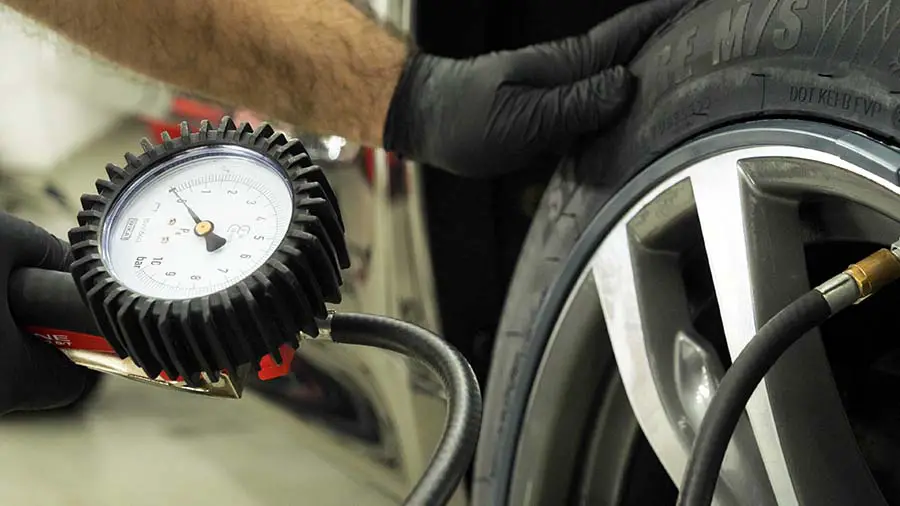
Reducing Grip
The grip relates to the friction between the tire and the road surface. It reflects how a car performs in different road conditions. Out of the many elements that can affect grip is the tension.
The contact surface between the road with overinflated tires is smaller than normal and vice versa, thereby affecting the grip. You can even witness some drivers go below the recommended measurement and cause a larger contact surface for their trip.
It might serve them well on dry race tracks. However, there come several drawbacks to this practice. Besides wear and tear and bad fuel consumption, hydroplaning is the biggest risk linked to underinflated tires.
Hydroplaning happens when you’re driving on a wet road, and the water layer gets between the tire and the road surface. That intervention can reduce traction and result in the driver’s inability to control the vehicle.
If you’re not inflating the tires properly, the tread underneath won’t be able to evacuate the excess water out in time, and there the hydroplaning happens. You can avoid such scenarios by following the car’s manual.
See more: The Optimal Winter Tire Pressure
Increasing Tire Wear
An underinflated tire will have a different footprint from the properly inflated one. The deflating can distort the contact surface and increase wear and tear, which will cost you a great deal of money replacing them.
Decreasing Fuel Economy
The rolling resistance is the factor that will affect your fuel economy. The greater it is, the more you’ll pay for fuel. And how is bad inflation enlarging your rolling resistance? By expanding the contact surface, making the car requires more force and consumes more fuel to run.
Your tires are responsible for a minimum of 1/5 of the fuel amount your car is consuming, according to a Michelin study. Furthermore, every 10% underinflation accounts for a 2% rise in fuel consumption.
How To Ensure Proper Tire Pressure
Reading up to this line, you must have realized how important it is to keep the tension in the best condition possible. This act will ensure several advantages for you in daily life and in the long run.
Below are some tips you should carry out for the best usage and maintenance:
Determine The Suggested PSI
As we have mentioned multiple times in the above content, the number from the specifications matters most. It’s credible because it’s a result of professional, dedicated work.
You should check for it and ensure that you will always know exactly the number when you need it again. Why? Because you will have to readjust the PSI over time since it can change due to certain factors.
Keep The PSI At The Recommended Level
Not only do you have to keep them at the recommended level, but you also need to maintain that level over time.
Remember that the number indicates the recommended cold tire pressure. If there are any changes in temperature, climate, or weather, your car’s true pressure might not be on par with the measurements.
Check Regularly
A little more careful won’t harm anyone, right? Regular checkups would only be good for you and your passengers. Besides regular checkups, we also recommend checking the PSI every time you’re about to go on a long trip or after that long trip.
But that doesn’t mean you shouldn’t check when you’re not using the car for a very long time. There are still chances of a pressure drop. Also, check all four tires. Should you check just one and then assume it hits the same for the rest, it might not be accurate!
View more: What Should Tire Pressure Be In Summer?
Conclusion
To reach the answer, you must have a proper understanding of your vehicle, starting with its specifications. Remember that it can change through time and under different circumstances.
Though an improper tire will result in dangers, you should be safe with enough maintenance and checkup of your car. Safe drive

